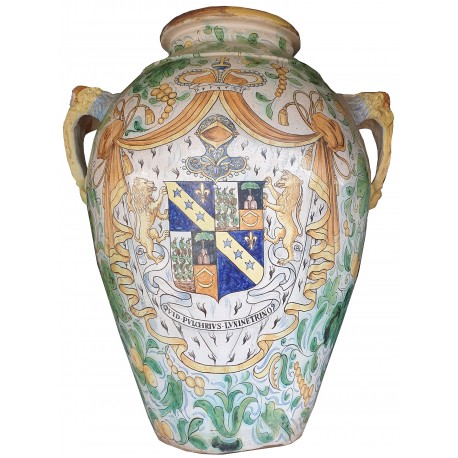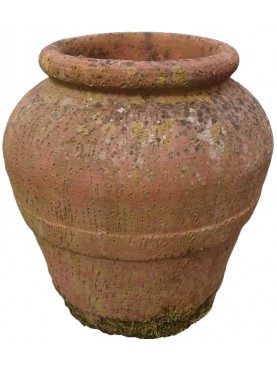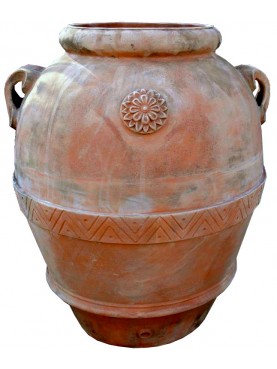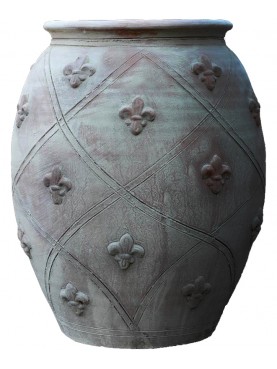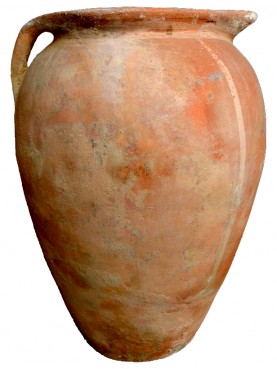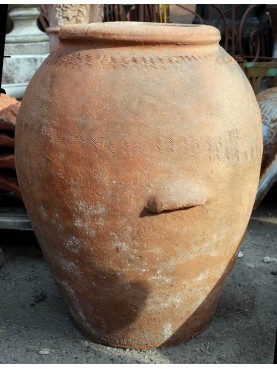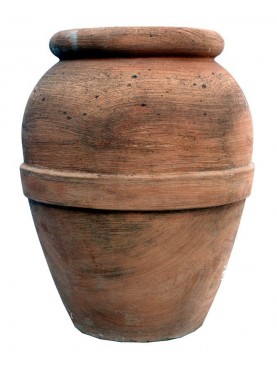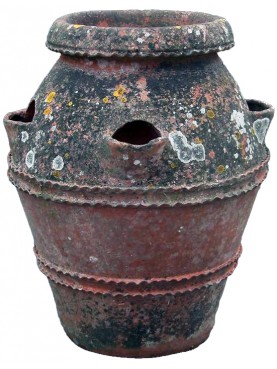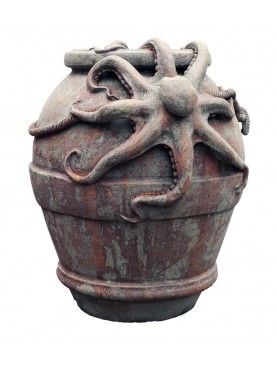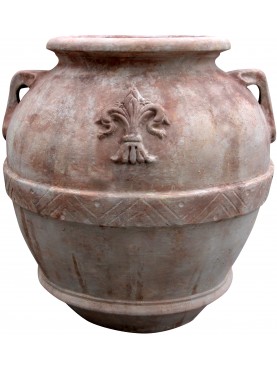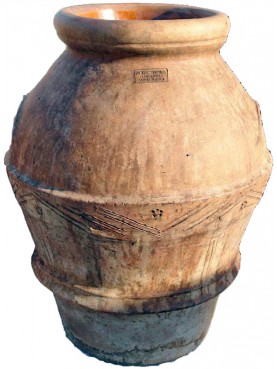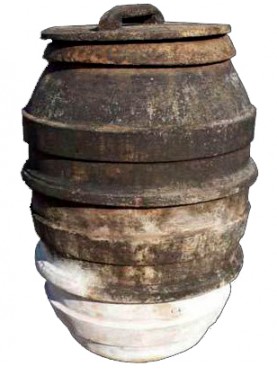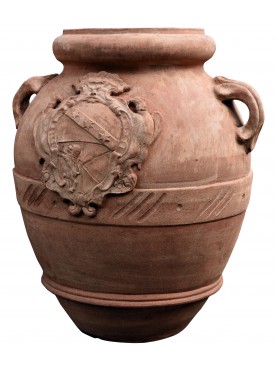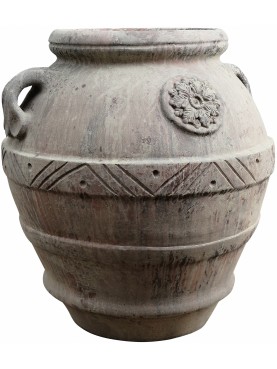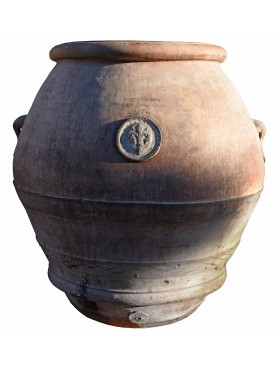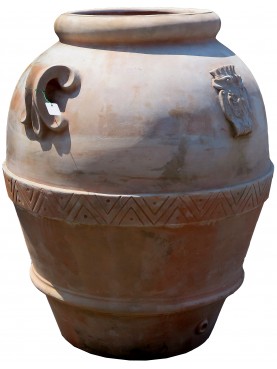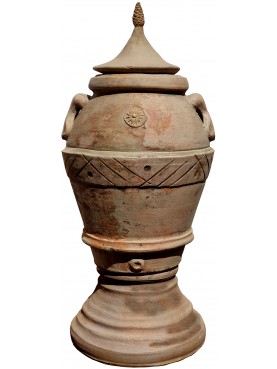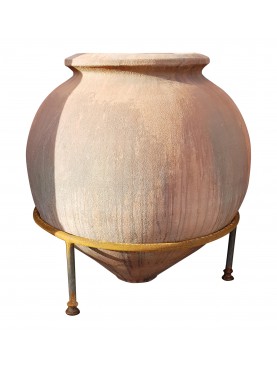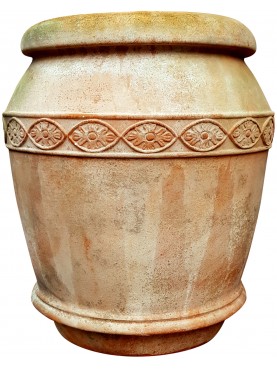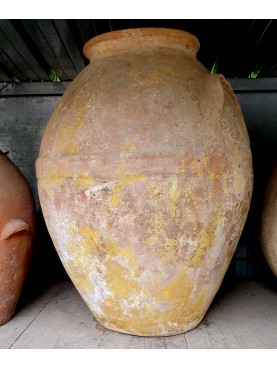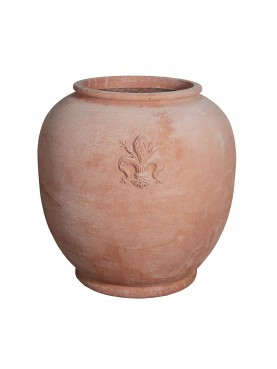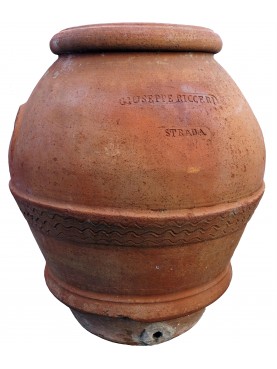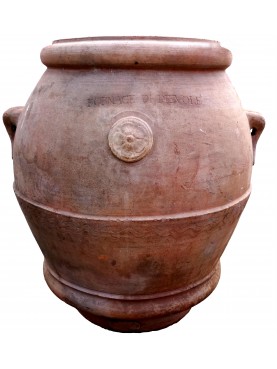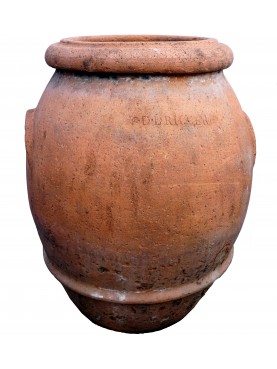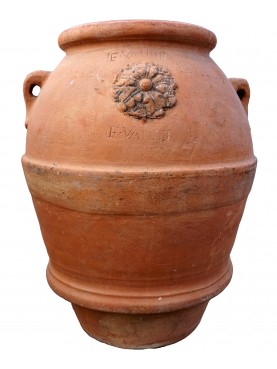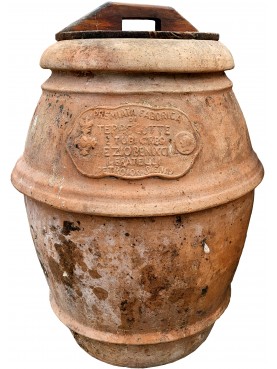ancient original Nineteenth-century Ginori-Conti majolica jar
ancient original Nineteenth-century Ginori-Conti majolica jar
14075
Original
Nineteenth-century Tuscan tiled jar with copper green phytoform motif, plastic handles in the shape of an angel and the Ginori-Conti family crest.
Provenance: Ginori-Conti family
Original and one-of-a-kind from the Signa Manufacture (Florence)
1 Available
Warning: Last item in stock!
Data sheet
| Height | 35.43 in | 90 cm |
| Diameter | 22.83 in | 58 cm |
| Weight | 121.25 lbs | 55 Kg |
| Artist / Creator / Architect | Fratelli Bondi | |
| Ancient manufacturing source | Montelupo | |
| External mouth diameter | 11.81 in | 30 cm |
| internal diameter of the mouth | 9.45 in | 24 cm |
| Diameter of the base | 11.81 in | 30 cm |
| Historical period | XIX century 1800s | |
| Maximum width | 25.2 in | 64 from handle to handle cm |
| Material | Maiolica |
More info
Coat of Arms of Ginori-Conti Family: in the 1st blue to the gold band loaded with three stars of 8 rays in the field and juxtaposed in the left corner of the head from a golden cornflower [Ginori]; in the 2nd of blue to the palm tree of green on a mountain of three golden peaks [Conti].
The jar is in perfect condition. The origin is certain and documented. We acquired the object directly from one of the last representatives of the Ginori family.
Unique piece painted on base # 566 S from the Manufacture's catalog, Book II, plate XX.
Rare and complete with documentation of provenance.
The Manifattura di Signa is a historic terracotta pottery workshop. It was created in 1895 by the will of Camillo Bondi.
"At the beginning of the twentieth century Signa was still one of the major industrial centers of straw.
To that industry, which had made the name of the country known beyond national borders, was added another activity which, from the last five years of the nineteenth century and in a short space of years, would have relaunched its name on European markets. and Americans: the artistic terracotta industry “Manifattura di Signa”, founded in Signa (Florence), in 1895 by Camillo Bondi, in the premises of the "Fornaci di Signa" factory owned by his brother Angelo.
At that time, the taste for the fake antique continued to seduce with all its charm, and in ceramics the interest in tradition had pushed the most important Italian manufactures to revisit Renaissance shapes and decorations, reaching with high craftsmanship the ancient virtuosities of the historiated and grotesque.
If those productions interpreted the antique with typical nineteenth-century eclecticism, the Manifattura di Signa instead aimed for the perfect similarity of the truth, both through the forms trodden on the original when possible, and by means of patinas simulating those of marbles and bronzes. and even the failures of time, in order to obtain the semblance of the authentic piece, both visually and tactile and, in some bronzes, also sound.
With this spirit, reproductions of sculptural and decorative masterpieces of all times will take shape from the Arno mud: from Etruscan to Greek statuary, from Roman to Renaissance, from Moorish vases to contemporary Art Nouveau creations.
The success that ensued is witnessed by numerous exhibition awards such as the medal at the Universal Expo in Paris in 1900, where he exhibited numerous plastic terracotta, suitable for decorating the exteriors, with a particular patination that made it look better and more resistant to agents. atmospheric, soon expanded the number of occupations and the specialization of young artists assisted by the experience of well-known sculptors, called to Signa for new ideas by the Bondi brothers, the brilliant founders and conductors of the Manufacture, coming from a family of Leghorn Jewish high bourgeoisie and close to the intellectual and anti-positivist milieu of the Florentine magazine of “Il Marzocco”.
With the new industry an informal school of young workers was thus generated in the Signe who, despite lacking regular education, growing under the experience of sculptors and in contact with the most sublime models of universal classicism, a real concentrate of museums in the world. , were naturally stimulated and educated in the beauty and proportions of forms, so much so that they became refined craftsmen, plasticizers, sculptors, able to give life to other similar manufactories. "
SOURCE: Marco Moretti, Bruno Catarzi sculptor, 1903-1996, Masso delle Fate Editions, Signa 2005.

